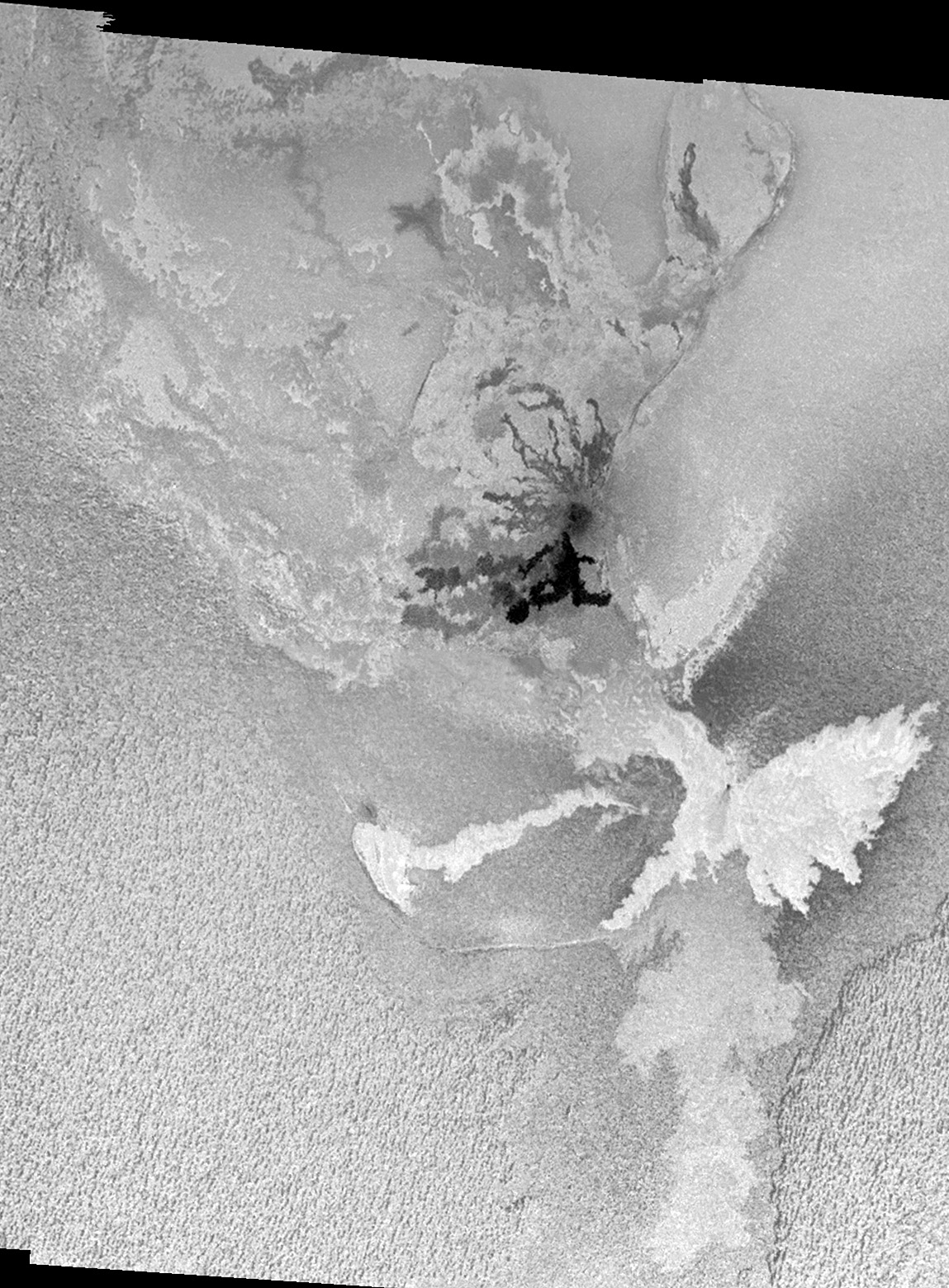 Arizona State University's Ramses Ramirez, Dave Williams, and Ron Greeley have a poster at next week's Lunar and Planetary Sciences Conference titled, "An Assessment of Near-Surface Conditions Conducive to Ionian Sulfur Flows." In this poster, the authors look at whether the bright flows seen at Sobo Fluctus (left) could have been generated secondary sulfur flows heated by a near-surface magma chamber.
Arizona State University's Ramses Ramirez, Dave Williams, and Ron Greeley have a poster at next week's Lunar and Planetary Sciences Conference titled, "An Assessment of Near-Surface Conditions Conducive to Ionian Sulfur Flows." In this poster, the authors look at whether the bright flows seen at Sobo Fluctus (left) could have been generated secondary sulfur flows heated by a near-surface magma chamber.In the model used by Ramirez et al., they consider a near-surface magma chamber whose heat is conducted by the surrounding silicate-sulfur country rock to the surface. They then estimated the amount of sulfur that would be melted by such a magma body and compared that to the size of the flows seen at Sobo Fluctus.
The authors determined that the amount of sulfur melted by a near-surface magma body was insufficient to explain the bright flows seen at Sobo. They suggest that the flows are instead primary sulfur flows, erupted from a vent with lava originating in a sulfur magma chamber below the surface.
Interesting work that further suggests the possibility of sulfur flows on Io, at least at some select locations. Many of these flows seem to occur outside of paterae. One possibility is that such activity is usually part of the first stages of paterae formation.
To create the above image of Sobo Fluctus, I reprocessed the entire CAMAXT01 mosaic from I27, which covers the region between Chaac Patera and Camaxtli Patera. Hope you all enjoy!
Link: An Assessment of Near-Surface Conditions Conducive to Ionian Sulfur Flows [www.lpi.usra.edu]










No comments:
Post a Comment